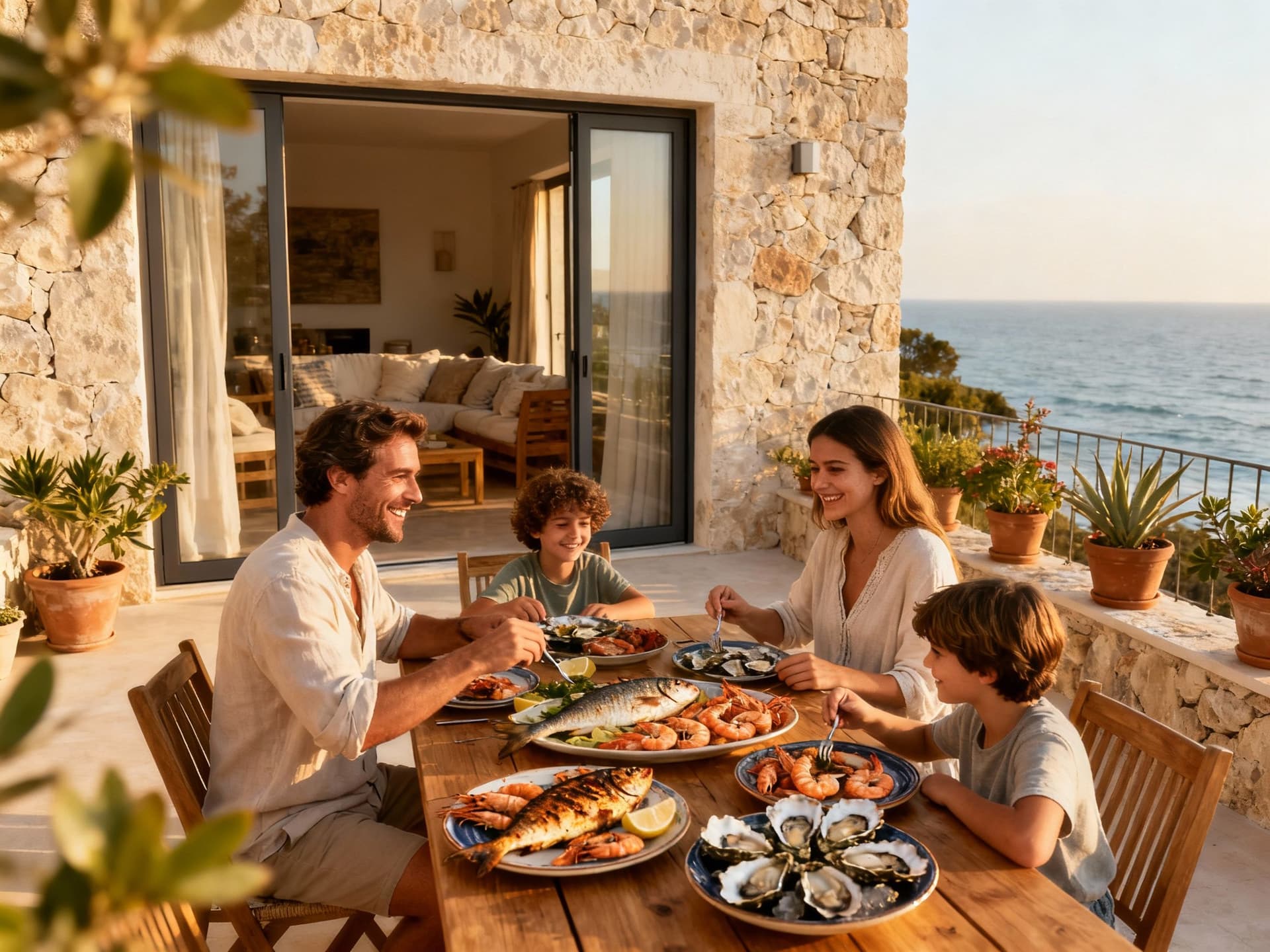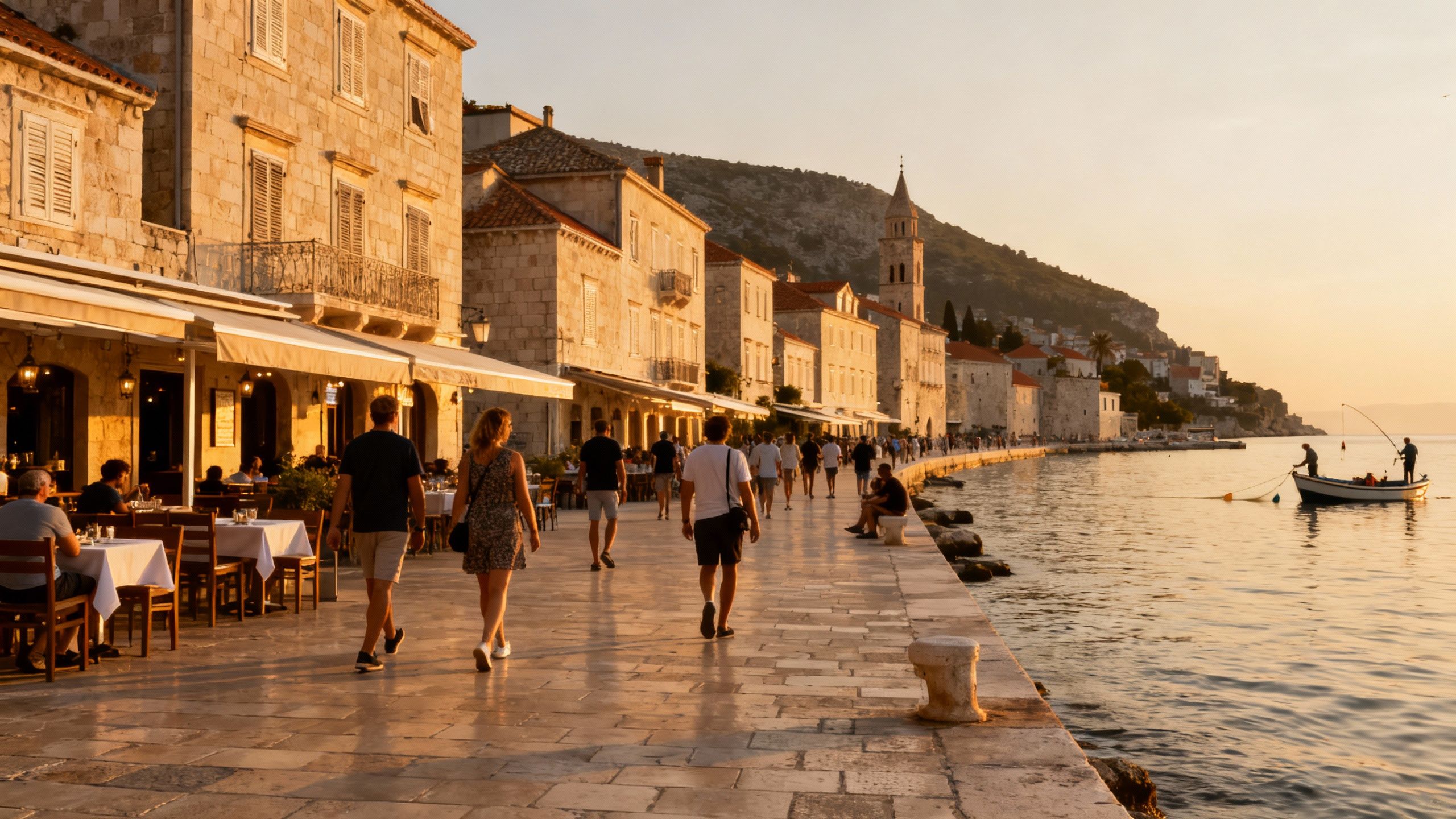Coastal France: Life Rhythms and Where Value Hides
Coastal France offers varied lifestyles and surprising value; pair season‑aware neighbourhood choices with notarial diligence to buy the life without overpaying.
Imagine stepping out for espresso on rue Masséna in Nice, then driving 20 minutes to a pebble cove where the water is clear and restaurants close at 11pm. France’s coast is not a single mood: it is bright boardwalk mornings in Biarritz, languid Provençal markets near Bandol, compact luxury in Beaulieu and practical family beaches west of Marseille. For buyers who think "the French coast is uniformly expensive," the truth is more varied — and more interesting. This piece pairs the life you’ll wake up to with the facts you need to act confidently.
Living the French Coastal Life

Coastal France moves at Mediterranean tempo along the Côte d’Azur and Atlantic pace in the Bay of Biscay. Days start with markets — olives, socca in Nice, fresh sardines in Biarritz — and end over a late aperitif under plane trees. Streets are territorial: cafés gather regulars, harbours keep fishermen’s schedules, and small squares host concerts in July. For buyers, the appeal is the daily rhythm: walkable routines, short commutes for local errands, and immediate access to sea and countryside.
Nice to Beaulieu: Urban Riviera vs Quiet Cap Corners
Nice’s Promenade and Place Garibaldi serve city-living with international flight links and year-round cafés. Go east a few kilometres and Saint-Jean-Cap-Ferrat or Beaulieu reveal tight streets, villas from the Belle Époque and smaller, quieter beaches. Mandelieu-la-Napoule and Théoule offer comparatively lower price points while keeping the Riviera lifestyle within reach. Choose Nice for services; choose smaller caps for privacy and villa architecture.
Atlantic Coast: Surf, Markets and Different Tempo
Biarritz and Hossegor have an active surf scene and a market culture shaped by seafood and Basque cuisine. Town centres are compact, with weekend crowds in summer and a quiet, serviceable winter. Properties there often trade on practical light, timber façades and proximity to dunes rather than formal gardens and terraces. For buyers wanting activity and culture without Riviera price premiums, the Atlantic coast deserves a close look.
- Lifestyle highlights (where to go, what to taste, what to do)
- Morning market on Cours Saleya, Nice — flowers, socca, and local olive stalls
- Terrace bars in Bandol — rosé and seafood within walking distance of family homes
- Surf at La Côte des Basques, Biarritz — weekday mornings are best for space
Making the Move: Practical Considerations

The dream of coastal life collides with the steps of French real estate. Expect an established process: a phase of search, financing, signed compromis or promesse, then the acte authentique handled by a notaire. Foreign buyers have the same rights as EU citizens but will appreciate local advice on taxation, seasonal rental rules and municipal regulations that affect coastal properties. The state guidance and notaires’ pages remain the clearest starting points for accurate steps and timelines.
Property types that suit coastal life
If you want morning markets and short walks, a central apartment in Nice or Biarritz will give you that life with manageable maintenance. For outdoor entertaining and privacy, small villas in Mandelieu, Sainte-Maxime or Bandol deliver garden space and parking. In older Riviera towns expect Belle Époque or 1950s buildings; on the Atlantic coast timber façades and renovated farmhouses are common. Match property type to routine: terrace breakfast, market run, and evening walk.
How local experts translate lifestyle into value
- Practical steps agents or advisors will take to align lifestyle and investment
- 1. Map daily routines to neighbourhoods: commute times, school routes, and market days.
- 2. Check seasonal occupancy rules and short‑let licensing — some coastal communes limit summer rentals.
- 3. Compare maintenance realities: sea air accelerates metal and wood wear; budget for façade and pool upkeep.
Insider Knowledge: What Expats Wish They’d Known
You will hear two stories from expats: one of immediate belonging and one of small paperwork surprises. The belonging usually starts with markets and clubs — Internations, IWCR and local associations ease introduction. The paperwork surprises are predictable: municipal planning rules, biennial taxe foncière notifications, and local syndic rules in apartment buildings. Experienced buyers factor social integration and bureaucracy into their timeline and budget alike.
Language, community and day-to-day social life
Basic French opens doors: shopkeepers appreciate it, municipal offices run more smoothly, and neighbours reciprocate small courtesies. But major coastal towns have active English-speaking communities and international schools near Nice and Cannes. Expect local rhythms — long lunches in summer, quieter January streets — and adapt by attending markets, joining local associations, and learning key municipal phrases.
Long-term lifestyle considerations
Coastal towns evolve. Some Riviera villages limit new construction to protect character, which supports long-term value but constrains supply. Climate considerations — rising storm intensity on the Atlantic and occasional severe coastal flooding — should inform insurance and elevation choices. Long-term owners on the coast tend to plan for maintenance and community involvement rather than short-term speculative flips.
- Red flags to watch on coastal properties
- Opaque copropriété accounts — request last three years of budgets and reserve funds
- Unresolved seaside erosion or flood risk — verify local PPRL / flood maps
- Seasonal rental restrictions in small communes — confirm with town hall
Market reality: recent trends and what they mean for buyers
Notaires de France and national reports show a renewed upturn in transactions in 2024–2025 after earlier rate pressure; prices have stabilised or risen modestly in many coastal departments. National guidance on the five-step purchase process remains authoritative for timelines and notarial steps. For coastal buyers that means: competition for well-located, low-maintenance homes is real, but value can be found in lesser-known communes and on the Atlantic coast where demand is active yet price dispersion is greater.
A simple plan for buyers who want coastal life without overpaying
- 1. Define the daily life you want: markets, schools, surf or marina — this narrows towns fast.
- 2. Shortlist three communes within 30 minutes of your preferred transport links and visit in different seasons.
- 3. Ask agents for recent copropriété/account statements, flood maps, and municipal rental rules before offers.
- 4. Work with a bilingual notaire or solicitor who can explain contracts, tax timing and registration steps.
Conclusion: live the life, measure the risk, then act
If you want coastal mornings and a reliable neighbourhood, start with lifestyle mapping and then verify facts. Use local associations to test the social fit, visit outside peak season, and insist on documentation that proves the property’s condition and regulatory status. Agencies that combine lifestyle knowledge with diligence — not sales rhetoric — are the ones that save buyers time and preserve the life they imagined.
Dutch relocation advisor who moved to Marbella in 2016. Guides Dutch buyers through visa paths, relocation logistics, and balance of lifestyle with value.


